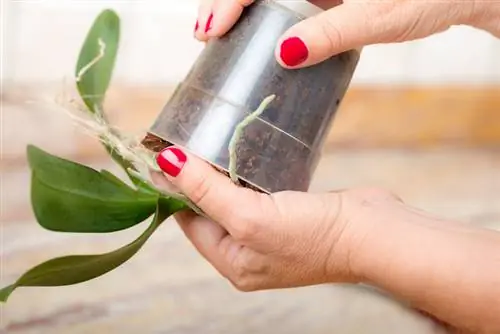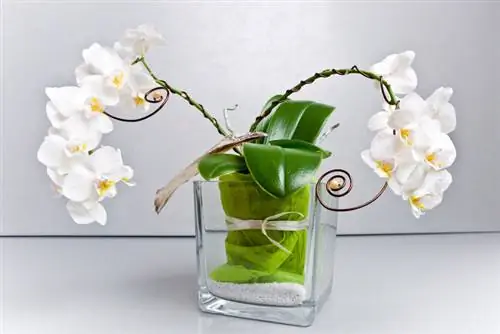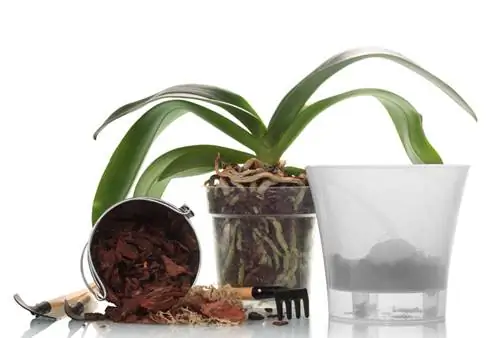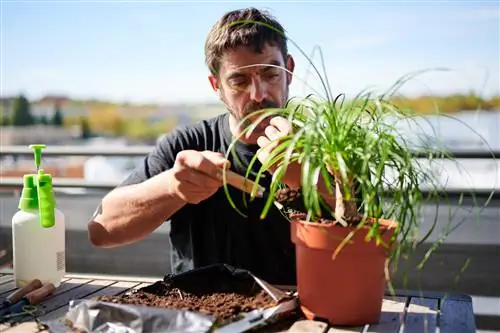- Author admin [email protected].
- Public 2023-12-16 16:46.
- Last modified 2025-01-23 11:20.
In a transparent culture pot, a noble orchid does not come into its own in a way that befits its status as the queen of flowers. If you put a planter over it, the aerial roots will lack vital light. By repotting your most beautiful orchid in glass, you solve the aesthetic problem. Read how to do it right here.

How do I repot my orchid in glass?
To successfully repot an orchid in glass, you need a suitable glass vase, expanded clay, orchid substrate and clean scissors. Repot the plant while it is in a dormant phase, filling the jar in layers and adjusting the watering technique to avoid waterlogging.
Tips at the right time
Changing to a new planter with fresh soil is associated with a high level of stress for any orchid. So that the procedure does not turn into a culture shock, please avoid an appointment in the middle of the flowering period. Instead, wait until the plant is in a dormant phase. The optimal time window is usually open at the end of winter, shortly before the fresh shoots appear.
Instructions for skillfully repotting into a glass
Please choose a glass vase that corresponds to the volume of the previous pot. The materials required are: expanded clay, orchid substrate, clean scissors and an old curtain or newspaper as a dirt trap. To ensure that the aerial roots are nice and supple, we recommend watering or dipping the orchid the day before. The steps continue:
- Pour a 2-3 cm high layer of expanded clay on the bottom of the glass
- Place enough substrate on top so that there is enough space for the root ball
- Now unpot the orchid and shake off all the substrate
- Cut off dried and stunted root strands
- Place the substrate-free, cut root ball into the glass with a twisting motion
By stabilizing the orchid with one hand, gradually fill in the coarse substrate. Gently knock the glass onto the tabletop every now and then so that the pine bark pieces are distributed evenly. At the end all aerial roots should be covered with orchid soil.
Tip
Since a glass or a glass vase does not have a bottom opening for water drainage, the pouring technique changes. To prevent waterlogging from forming, add the lime-free water to the container for a few minutes if necessary. Then pour out the water completely. As long as a residue remains in the glass, there is a risk of root rot forming.






